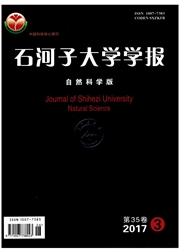

 中文摘要:
中文摘要:
河流纵向离散系数是反应河流中污染物扩散的重要参数之一,本文从国内的研究现状出发,对河流的纵向离散系数示踪实验法的研究成果进行综述,比较分析了利用现场示踪试验数据计算纵向离散系数的矩量法、直线图解法、回归分析法和演算优化等方法的优缺点,并列出了代表性的计算公式;特殊地形对离散系数的影响较复杂,还需改进算法或各种算法相结合的混合算法以适用于特殊地形,使其结果更切合特殊地形的实际。
 英文摘要:
英文摘要:
River longitudinal dispersion coefficient is one of the important parameters to reveal the diffusion of contaminant. Based on the status quo of research,this paper reviewed the results of the river longitudinal dispersion coefficient tracer experi- ments. The Authors described a field tracer test data to calculate the longitudinal dispersion coefficient in the method of mo- ments, such as linear graphic method, regression analysis and calculus optimization methods, and analyzed their advantages and disadvantages. A number of representative formulas were cited to provide reference for law of pollution diffusion in the water. The complex of natural rivers, for some special terrain on the impact of the dispersion coefficient, is unclear. Improved algorithm or other algorithm of combining mixed algorithm still need to be used for special terrain,and to make the result more practical.
 同期刊论文项目
同期刊论文项目
 同项目期刊论文
同项目期刊论文
 VLDA model and its application in assessing phreatic groundwater vulnerability: A case study of phre
VLDA model and its application in assessing phreatic groundwater vulnerability: A case study of phre 期刊信息
期刊信息
